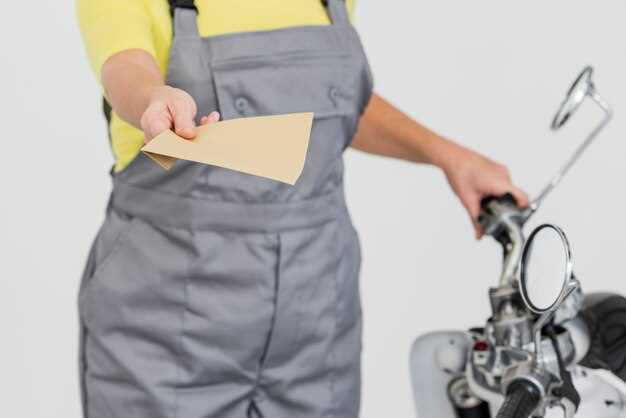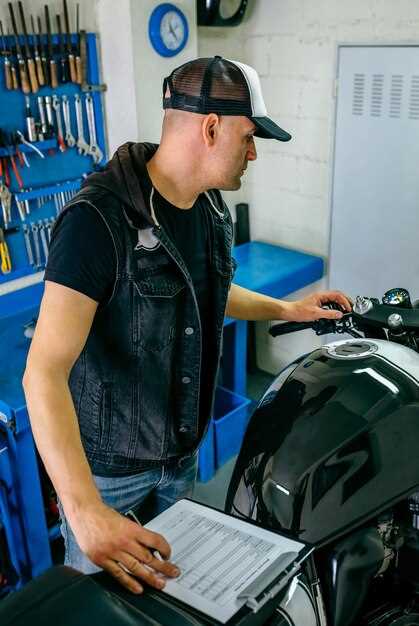

Motorcycles are not just a mode of transportation; they represent freedom and adventure. To fully enjoy this experience, proper maintenance is essential. For those who are new to the rider community, understanding the basics of DIY motorcycle maintenance can seem daunting. However, with a little knowledge and the right tools, motorcycle care becomes not just manageable, but also an enjoyable aspect of ownership.
This guide aims to empower beginners by providing straightforward, practical tips on how to take care of your bike. Whether you are preparing for a long journey or simply want to extend the life of your motorcycle, mastering DIY maintenance is a valuable skill. From changing the oil to checking tire pressure, each task contributes to the overall health and performance of your machine.
Embracing a hands-on approach to motorcycle upkeep fosters a deeper connection between you and your ride. With every wrench turn and inspection, you’ll gain not only technical skills but also confidence. This guide will help you navigate the initial steps toward becoming proficient in maintaining your motorcycle, allowing you to hit the road with assurance and peace of mind.
Step-by-Step Tire Inspection and Replacement
Regular maintenance of your motorcycle is essential for safety and performance, and tire inspection is a critical aspect of this process. Here’s a concise guide to help you carry out a thorough tire inspection and replacement.
1. Safety First: Before starting, ensure the motorcycle is on a stable surface. Use a motorcycle stand, if available, to keep it upright.
2. Visual Inspection: Examine the tires for any visible damage such as cuts, punctures, cracks, or excessive tread wear. Look for any foreign objects embedded in the tire. Pay attention to the sidewalls, as they can also incur damage.
3. Tread Depth Measurement: To determine if your tires need replacement, check the tread depth. Use a tread depth gauge or a simple penny test. Insert a penny into the tread; if you can see the top of Lincoln’s head, it’s time for new tires. Minimum tread depth should be around 1/16th of an inch.
4. Air Pressure Check: Use a tire pressure gauge to check the air pressure. Refer to your motorcycle’s manual for the recommended PSI. Proper inflation is crucial for optimal performance and safety.
5. Preparing for Replacement: If a replacement is necessary, gather all required tools: a tire lever, a wrench, a jack, and a new tire. Make sure the new tire matches the specifications listed on your motorcycle’s tire sticker.
6. Removing the Tire: Loosen the axle nut with a wrench. Use a motorcycle jack to lift the bike off the ground. Remove the wheel by sliding the axle out and taking off the brake caliper if needed.
7. Installing the New Tire: Carefully remove the old tire by using tire levers. Install the new tire, ensuring it is positioned correctly on the rim. Reinstall the wheel by sliding the axle back in place and tightening the axle nut securely.
8. Balancing: Once the tire is installed, balance the wheel to prevent uneven wear and vibrations while riding. You can use a static balancer or consult a professional if unsure.
9. Final Checks: After installation, double-check the air pressure and ensure that the brake caliper is correctly positioned. Spin the wheel to make sure there’s no rubbing or interference.
10. Test Ride: Take your motorcycle for a short test ride to assess the new tire’s performance. Stay vigilant for any unusual sounds or vibrations, and ensure the braking is effective.
Following these steps will enhance your understanding of motorcycle maintenance through DIY tire inspection and replacement. Regularly performing these checks can lead to improved safety and a better riding experience.
Essential Fluids: Checking and Changing Oil and Coolant

Maintaining your motorcycle requires regular checks and changes of essential fluids, particularly oil and coolant. These fluids play a crucial role in keeping your bike running smoothly and efficiently. Understanding how to check and change them is a key part of DIY motorcycle care.
First, let’s discuss engine oil. Engine oil lubricates moving parts, reduces friction, and helps prevent overheating. To check your oil level, start with a warm engine, then turn it off and let it sit for a few minutes. Locate the dipstick, remove it, wipe it clean, and reinsert it. Pull it out again to check the oil level; it should be within the marked range. If it’s low, top it up with the appropriate oil specified in your owner’s manual.
When it comes to changing the oil, gather the necessary tools: a wrench, an oil filter wrench, a funnel, and a drain pan. First, warm up your engine for a few minutes to ensure the oil drains easily. Locate the oil drain plug, place the drain pan underneath, and carefully remove the plug. Allow the old oil to completely drain out. After that, replace the drain plug and remove the old oil filter with the wrench. Install a new filter, applying a bit of new oil to the rubber gasket to ensure a good seal. Finally, pour new oil into the engine using a funnel, checking the level with the dipstick once again.
Next, let’s look at coolant. Coolant helps regulate engine temperature and prevents overheating. To check your coolant level, look at the reservoir tank, usually located near the front of the motorcycle. The level should be between the minimum and maximum marks. If it’s low, you can add a mixture of coolant and water, following your manufacturer’s recommendations.
Changing the coolant involves a more involved process. First, ensure the engine is completely cool. Locate the coolant drain plug at the bottom of the radiator, place a drain pan underneath, and remove the plug to let the old coolant drain out. After draining, replace the plug and fill the radiator with new coolant using a funnel. Be sure to bleed the system of any air bubbles by running the motorcycle and allowing it to reach operating temperature. Check for leaks during this process.
Regularly checking and changing engine oil and coolant is vital for the longevity and performance of your motorcycle. By incorporating these tasks into your DIY motorcycle maintenance routine, you’ll ensure that your bike remains in optimal condition, enhancing both safety and enjoyment while riding.
Brake System Basics: How to Inspect and Replace Brake Pads

The brake system is critical for motorcycle safety and performance. Regular maintenance ensures optimal braking and prolongs the life of components. Begin by inspecting your brake pads frequently, especially if you ride often. Look for signs of wear, such as thinning pads or uneven surfaces. In most cases, the pads should be replaced when they reach about 1/8 inch in thickness.
To inspect the brake pads, remove the wheel, allowing access to the caliper. Check the friction material on both the inner and outer pads. Use a caliper tool or ruler to measure their thickness. If the pads are worn beyond acceptable limits, replacement is necessary to keep your motorcycle in top condition.
When replacing brake pads, ensure you have the correct replacement pads for your specific motorcycle model. Start by removing the caliper from the mounting bracket. Unbolt the caliper and carefully slide it off the rotor. Make sure to keep the brake line supported and avoid putting stress on it.
Next, remove the old brake pads by sliding them out from the caliper. Clean the caliper with brake cleaner to remove any dust or debris before installing the new pads. Place the new pads in the caliper, ensuring they are properly aligned and seated. Reattach the caliper to the mounting bracket and torque the bolts to the manufacturer’s specifications.
Finally, before riding, pump the brake lever several times to ensure the pads seat correctly against the rotor. Check the brake fluid level and make sure it is within the recommended range. Regular care of your brake system not only enhances safety but also contributes to a smoother riding experience.
